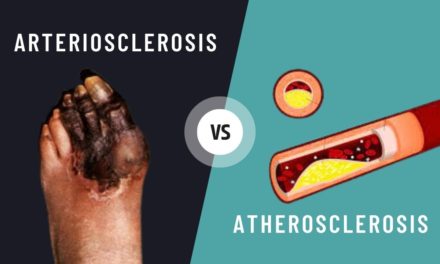Understanding Angina Pectoris: Causes, Treatment, and Prevention
Introduction:
Angina pectoris, commonly called angina, is a heart condition characterized by chest pain or discomfort. It occurs when the heart muscle does not get an adequate supply of oxygen-rich blood. Understanding the causes, recognizing the symptoms, and implementing appropriate treatment and prevention strategies are essential to managing angina and reducing the risk of complications. In this article, we’ll explore the world of angina pectoris, exploring its nature, treatment options, and preventative measures.
1. Understanding Angina Pectoris:
Angina pectoris is primarily caused by reduced blood flow to the heart muscle, usually due to narrowing or blockage of the coronary arteries that supply oxygen and nutrients to the heart. The most common underlying cause is atherosclerosis, the buildup of plaque in the arteries, which restricts blood flow.
2. Symptoms and types:
The main symptom of angina is chest pain or discomfort, often described as a feeling of squeezing, pressure, heaviness, or burning. This pain can spread to the shoulders, arms, neck, jaw or back. Other associated symptoms include shortness of breath, nausea, dizziness, and fatigue. There are different types of angina:
- a Stable angina: This type of angina occurs during physical exertion or emotional stress and is predictable in nature.
- b Unstable angina: Unstable angina is more severe and occurs at rest or with minimal exertion. This may indicate a heart attack and requires immediate medical attention.
- c Variant (Prinzmetal’s) angina: Variant angina is caused by coronary artery spasm, causing temporary narrowing of the arteries and chest pain. It often occurs at rest and may be unrelated to physical exertion or stress.
3. Treatment Options:
Treatment for angina is aimed at reducing symptoms, preventing complications, and improving overall heart health. The following methods are commonly used:
- a Medications: Nitroglycerin is often prescribed to relieve angina pain by relaxing and widening the blood vessels. Other medications, such as beta blockers, calcium channel blockers, and antiplatelet medications, may be prescribed to control symptoms, control blood pressure, and reduce the risk of blood clots.
- b Lifestyle changes: Lifestyle changes play an important role in the management of angina. These include adopting a heart-healthy diet that is low in saturated and trans fats, quitting smoking, exercising regularly, maintaining a healthy weight, managing stress, and managing conditions such as high blood pressure and diabetes. Includes controlling underlying conditions.
- c Medical procedures: In some cases, medical procedures may be necessary to improve blood flow to the heart. These may include angioplasty and stenting, where a balloon is used to open blocked arteries, and a stent is inserted to keep the artery open. Coronary artery bypass surgery may be recommended in severe cases where there are multiple blockages.
4. Prevention Strategies:
Prevention of angina pectoris and reducing the risk of complications include adopting a heart-healthy lifestyle and managing risk factors. The following strategies may be beneficial:
- a Maintain a healthy diet: Eat a balanced diet rich in fruits, vegetables, whole grains, lean protein and healthy fats while limiting sodium, saturated fats and processed foods.
- b Regular exercise: Engage in at least 150 minutes of moderate aerobic exercise per week as advised by a health care professional. Physical activity improves heart health, helps control weight, and reduces the risk of cardiovascular disease.
- c Quit smoking: Smoking damages blood vessels, raises blood pressure, and accelerates the progression of atherosclerosis. Quitting smoking significantly reduces the risk of angina and other heart-related conditions.
- d Manage stress: Adopt stress-reduction techniques such as meditation, deep breathing exercises, and engaging in activities that promote relaxation and mental well-being.
- e Regular check-ups: Routine physical examinations, blood pressure monitoring, cholesterol screening, and diabetes management are important for early detection and management of risk factors.
Result:
Angina pectoris is a condition that needs attention, as it indicates an underlying cardiovascular problem. Understanding its causes, recognizing the symptoms, and seeking appropriate treatment and prevention are critical to managing angina and reducing the risk of heart-related complications. By adopting a heart-healthy lifestyle, taking prescribed medications and following medical advice, individuals can effectively control angina symptoms and promote overall heart health. Regular monitoring, early intervention, and awareness of the importance of cardiovascular health contribute to improved quality of life and reduced risk of adverse cardiac events.










